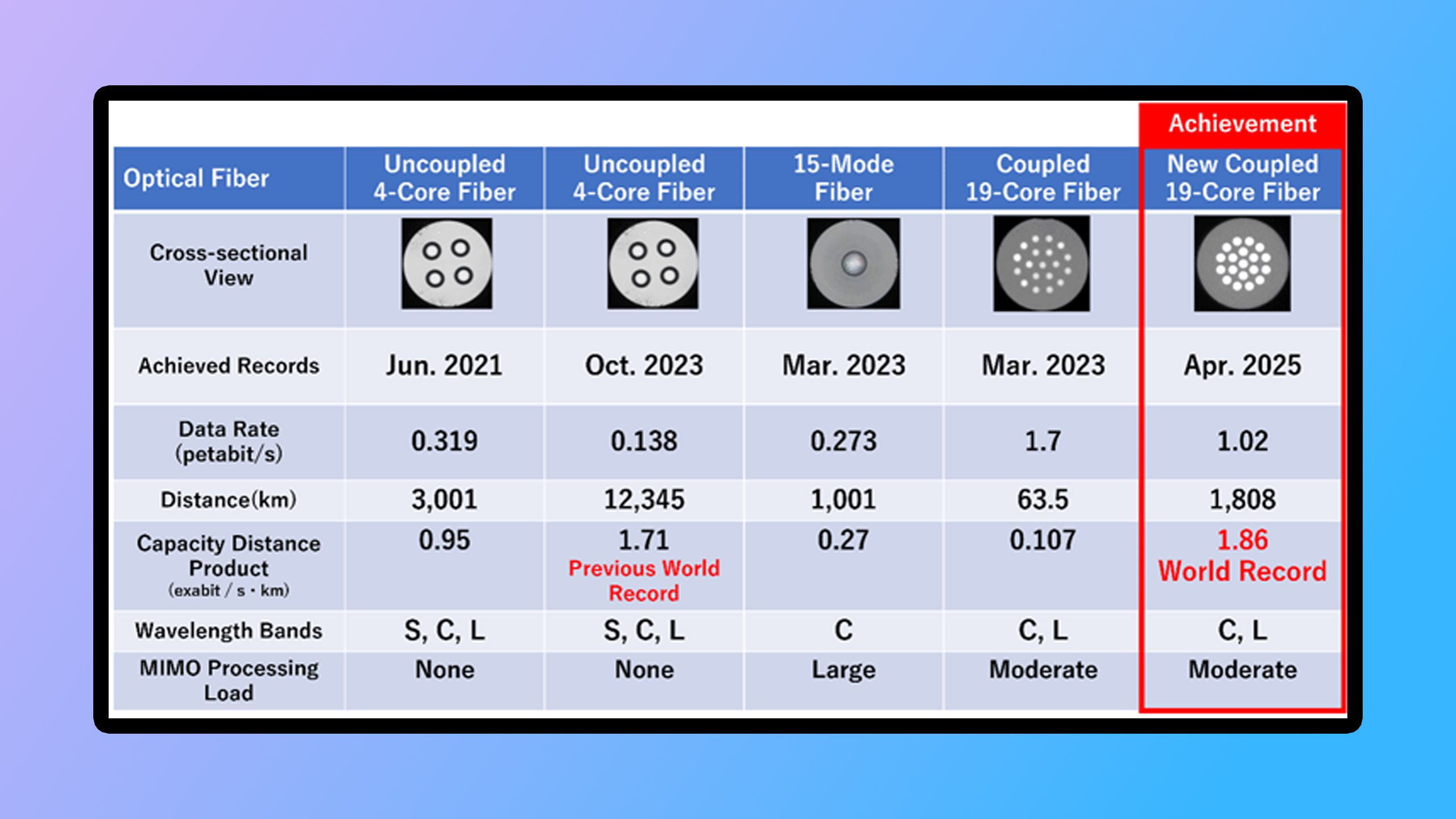Abstract
- Japan set a brand new web velocity file at 1.02 petabits per second, about 127,500 GB/s.
- The achievement is round 3 million occasions quicker than the US common broadband velocity of 288 Mbps.
- The NICT used a 19-core optical fiber cable to attain the file velocity, with a diameter of 0.125mm.
Over the previous 20 years, internet speeds have vastly improved due to advances in fiber know-how. Whereas gigabit web is changing into more common within the US, it nonetheless lags behind the speeds not too long ago achieved by researchers in Japan.
In response to the Nationwide Institute of Data and Communications Expertise (NICT) in Japan, it has set a brand new world file for web velocity, reaching 1.02 petabits per second over a distance of 1,123 miles. That equals about 127,500 GB/s, and roughly the gap between Chicago and Dallas. With that velocity, you would obtain Netflix’s total streaming library in only one second (by way of CNET). You’d additionally by no means have a difficulty downloading a 100GB online game ever once more.
Within the US, web velocity is often measured in megabits per second (Mbps). When you convert Japan’s achievement, it equals roughly 1,020,000,000 Mbps. In response to Speedtest, the typical mounted broadband web velocity within the US is round 288 Mbps. So, the velocity researchers in Japan have simply reached is greater than 3 million occasions quicker.
Associated
Using this port will upgrade your smart TV for free
You will not be getting the video high quality your TV is able to.
How did NICT researchers obtain this?
They used a 19-core optical fiber cable
Japan’s NICT achieved its new web velocity file by growing an optical fiber with 19 cores, built-in right into a cable measuring simply 0.125mm in diameter. This dimension is commonplace for fiber optic cables used globally, indicating potential for widespread adoption because of its compatibility with current community infrastructure, like undersea cables.
“The analysis of ultra-high-capacity transmission utilizing coupled 19-core optical fibers and superior optical amplification has tremendously superior the event of know-how for the conclusion of high-capacity, long-distance optical communication infrastructure sooner or later,” the NICT report states.
This is not the primary time the NICT has damaged a file both. Final 12 months, it shattered the web velocity file with a velocity of fifty,250 GB/s. Now in 2025, it has damaged its file by over double.
With the worldwide demand for increased web bandwidth rising — particularly for cloud storage, AI, and high-quality streaming — the NICT’s breakthrough marks an important step in addressing the rising want for extra bandwidth. In response to Nielsen’s Law, international bandwidth calls for have elevated by 50 % yearly since 1983, indicating that sooner or later, 1.02 petabits per second could also be wanted.

Associated
Wi-Fi what…? The difference between Wi-Fi 6, 6E, and 7
Wi-Fi 7 gives one of the best efficiency, however it’s not at all times value paying for the privilege.
Trending Merchandise

Lenovo New 15.6″ Laptop, Inte...

Thermaltake V250 Motherboard Sync A...

Dell KM3322W Keyboard and Mouse

Sceptre Curved 24-inch Gaming Monit...

HP 27h Full HD Monitor – Diag...

Wi-fi Keyboard and Mouse Combo R...

ASUS 27 Inch Monitor – 1080P,...

Lenovo V14 Gen 3 Enterprise Laptop ...








